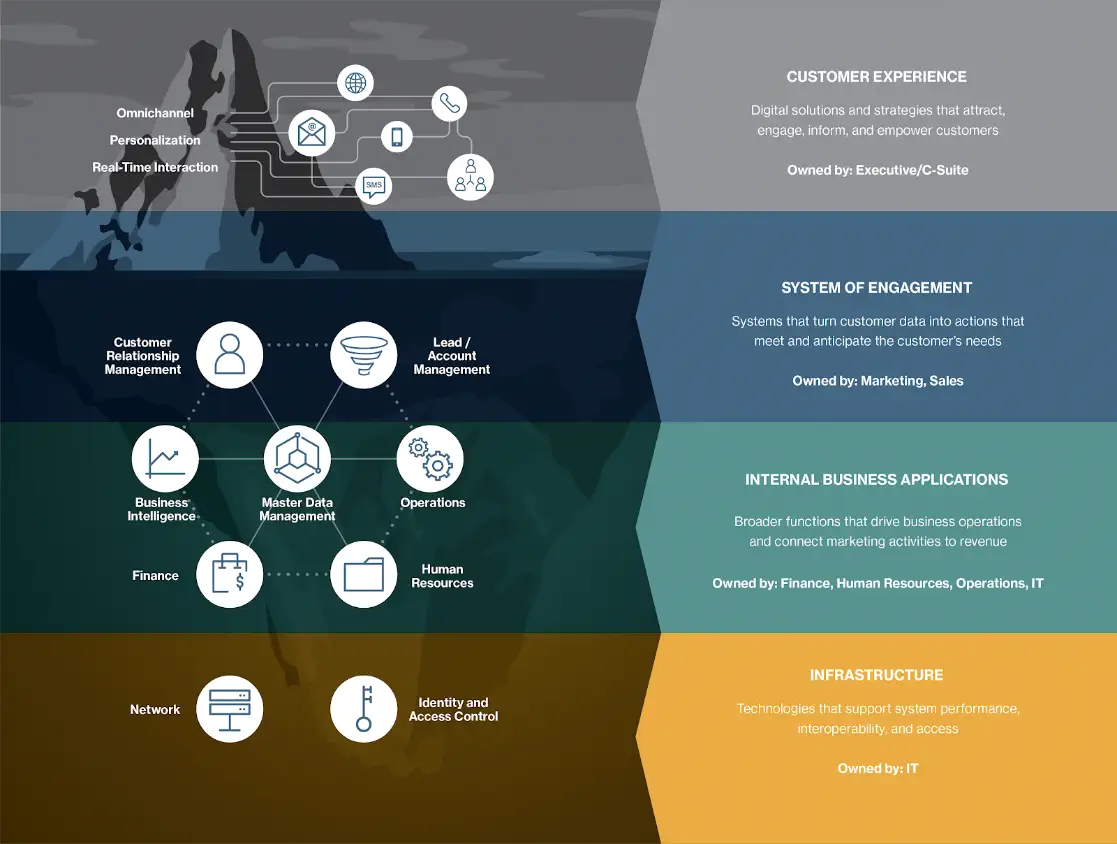Build a Marketing Engine to Drive Organizational Growth
 Eric Hollebone is a regular contributor to CMSWire. As COO, he works closely with the CEO and executive leadership team to plan and manage DemandLab’s operational policies and develop and help implement a plan to attain the agency’s short and long-term financial and operational goals. This post originally appeared on CMSWire.
Eric Hollebone is a regular contributor to CMSWire. As COO, he works closely with the CEO and executive leadership team to plan and manage DemandLab’s operational policies and develop and help implement a plan to attain the agency’s short and long-term financial and operational goals. This post originally appeared on CMSWire.
In our last article, we discussed how to develop an essential and unique blueprint that defines how you drive growth at your organization.
Now that you have a blueprint, it’s time to implement a growth engine to align people, processes, and technologies around one central goal: supporting the customer journey.
In other words, it’s time to move your plan into action.
Marketing: The sum of many parts
While the blueprint articulates the organization’s requirements, the growth engine translates those requirements into an integrated system of technology platforms, human innovation, and automated processes. It extends across an organization and captures the data from every customer touchpoint, from the first touch to renewal.
The magic happens when traditional, customer-facing marketing activities connect to a broader system. While every piece of data and every data-driven activity contributes to value, tying it all together generates true insight and enables exceptional customer experiences.
Marketing is about more than serving as the brand and logo police. It is the topmost customer-facing layer of a massive system that encompasses every business function. Behind the scenes, it works down in the trenches, doing lead generation, moving leads into prospects, and so on—all the way through the revenue funnel in a defined, systematic way. It’s like an iceberg: The part visible above the surface is only a fraction of what lies beneath.
An iceberg has layers
Like an iceberg, most of the growth engine is submerged below the customer’s sightline. But every part is designed to align the organization’s processes and technologies to support the customer’s experience.

Let’s look at the layers in this particular iceberg, who is involved and responsible for each one, and how these layered technologies and processes focus on helping you optimize demand generation, brand integrity, content strategy, omnichannel delivery, and many other activities that enrich and guide the customer journey.
- The customer experience is the topmost visible layer of the growth engine. It includes digital solutions and strategies that attract, engage, inform, and empower customers to solve their problems, select your offering, and realize their potential.
- The system of engagement captures customer data to build a system of record and drive a system of action that anticipates and then meets the customer’s needs. By connecting this to other business functions, marketing can enhance the customer experience and demonstrate the impact of marketing activities on revenue generation. This system is supported by a range of business functions, including operations, human resources, finance, and business intelligence, and is comprised of two components.
-
- A system of record: This is the single source of truth that consolidates and delivers a complete view of the customer.
- A system of action: This is the engine that models customer behavior and predicts or preempts communication and touchpoints to drive monetizing activities.
- At the center is master data management, which holds all the parts together through data governance, business processes, and systems integration. Master data management connects every business line to a shared center that enhances the flow of data and enables the organization to move at the speed of the customer.
- Supporting these higher-level functions is technological infrastructure, including network access, bandwidth provisioning, and identity and access management controls.
From iceberg to engine
Remember, your blueprint must serve as a strategy, not a tactic. Although you must be disruptive in the strategy stage, you must be effective in execution. And this requires different types of thinking. Many department heads tend to think in their own bubble—without realizing the value of integrating with the expertise and tools of other departments. Your iceberg can’t become an engine without that integration.
Digital transformation is a big deal—and the engine that powers that goal can seem intimidating. Take your time. Collaborate with your colleagues. And then take a deep breath and go for it.
Marketing should instill hope and leave the customer in a better place than when they started their journey. And if you’ve brought your colleagues together and built a blueprint that is centered on the customer and connected to the organization’s goals for revenue growth, that will happen. You’ll be building on the right foundation.
